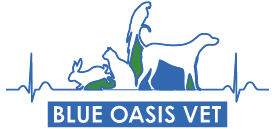Ultrasound
Ultrasound for pets is a fascinating and valuable diagnostic tool that helps veterinarians visualize the internal structures of your pet without the need for invasive procedures.
What Is Pet Ultrasound?
Ultrasound, or ultrasonography, is a non-invasive imaging technique that uses sound waves to create real-time images of your pet’s internal organs and soft tissues. It’s commonly used for diagnosing a variety of health conditions.
How Does It Work?
Sound Wave Emission: A special device called a transducer emits high-frequency sound waves that are inaudible to humans. These sound waves travel through the body and bounce off internal structures.
Echo Reception: The transducer also receives the echoes of these sound waves as they bounce back from the organs and tissues.
Image Creation: The ultrasound machine processes these echoes and converts them into visual images displayed on a monitor. This allows veterinarians to see the size, shape, and texture of organs, helping them identify any abnormalities.
Benefits of Ultrasound for Pets
Non-Invasive: Unlike surgical procedures, ultrasound is safe and painless, making it a stress-free experience for your pet.
Real-Time Visualization: It provides dynamic images, allowing veterinarians to observe the movement of organs and blood flow.
Wide Range of Applications: Ultrasound can help diagnose various conditions, including: Tumors, Heart disease, Abdominal issues, and Pregnancy monitoring.
What to Expect During an Ultrasound Exam
Preparation: Depending on the area being examined, your veterinarian may recommend fasting your pet for a few hours before the procedure.
Comfort: Your pet will be positioned comfortably, often lying on their side. A gel is applied to the skin to help transmit the sound waves.
Duration: The procedure typically lasts between 15 to 30 minutes, depending on the complexity of the examination.
Ultrasound is a powerful tool that enhances our ability to diagnose and treat pets effectively. If you have any more questions about ultrasound or other veterinary procedures, feel free to ask!
FAQ’s
Frequently Asked Questions
No, the ultrasound is a painless and non-invasive procedure. Most pets tolerate it well and may even relax during the exam.
After the ultrasound, your veterinarian will discuss the findings with you. They may provide a report and images for your records, and discuss any further steps if necessary.
Ultrasound is considered very safe, with no known risks or side effects. It does not involve radiation, making it a preferred choice for imaging.
Generally, pet owners are not allowed in the examination room during the ultrasound to minimize distractions and ensure the best results. However, your veterinarian will keep you informed throughout the process.



